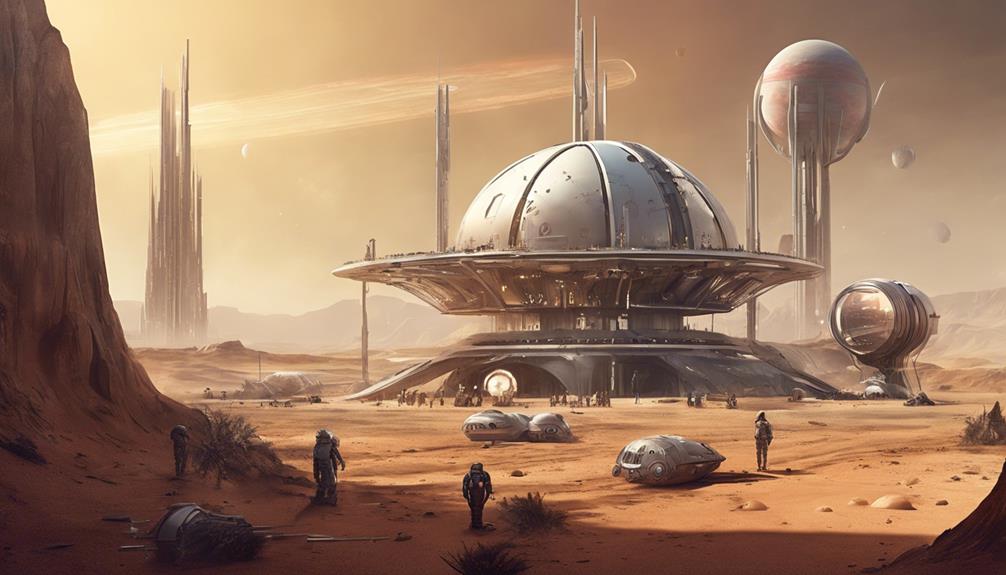The prospect of human habitation on other planets has intrigued scientists and space enthusiasts alike. As we explore the possibilities of settling beyond Earth, questions arise about the feasibility, sustainability, and ethical implications of such endeavors. The challenges of adapting to alien environments, creating self-sustaining habitats, and ensuring the survival of future generations pose significant hurdles. While technology and scientific advancements offer glimpses of hope, the road to interplanetary colonization is paved with uncertainties and complexities that warrant careful consideration.
Key Takeaways
- Mars is a prime candidate for colonization due to its lower gravity and thin CO2 atmosphere.
- Radiation exposure risks require innovative solutions for long-term habitation.
- Sustainable food, water, and resource management are essential for interplanetary living.
- Gravity, atmosphere, and environmental factors impact human health on other planets.
Potential for Human Colonization
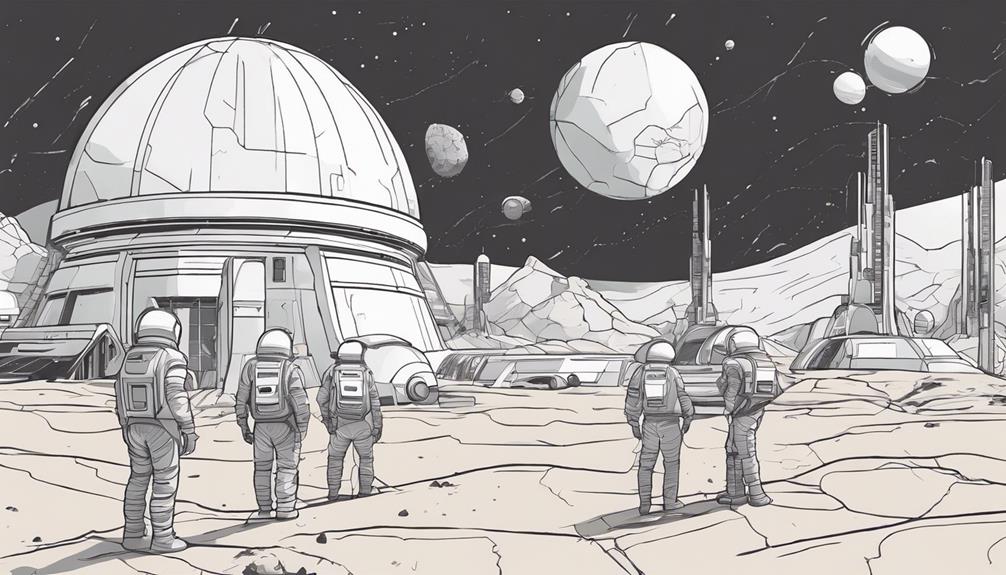
Human colonization of other planets, particularly Mars, holds promise due to factors such as its lower gravity and thin CO2 atmosphere. While the surface conditions on Mars are harsh, the planet's similarities to Earth make it a prime candidate for potential habitation. Establishing a sustainable human presence on Mars would necessitate the creation of underground habitats or enclosed environments to shield inhabitants from the planet's thin atmosphere and high radiation levels.
Compared to other planets like Venus and Jupiter, Mars offers a more hospitable environment for potential colonization efforts. Venus, with its scorching temperatures and toxic atmosphere, presents significant challenges for sustaining life. Jupiter, a gas giant without a solid surface, is also unsuitable for human habitation.
The feasibility of living on Mars hinges on technological advancements in life support systems, resource utilization, and transportation. While the distance to Mars poses logistical challenges for supply missions, ongoing research and development in space exploration offer hope for overcoming these obstacles. In conclusion, Mars stands out as a promising candidate for future human colonization endeavors within our solar system.
Habitability of Mars and Venus
The habitability of Mars and Venus is fundamentally shaped by their distinct atmospheric compositions and surface conditions. Mars, with its lower gravity and thin CO2 atmosphere, is considered more habitable than Venus. Venus, on the other hand, is inhospitable, characterized by extreme temperatures and a thick, toxic atmosphere that is unsuitable for human life. Despite its colder conditions compared to Earth, Mars offers potential for human visits. However, sustaining astronauts on Mars would necessitate underground living or artificial environments due to the harsh surface conditions. Recent discoveries of trace amounts of oxygen and water vapor on Mars hint at potential habitability, sparking further interest in the planet's potential for colonization. In contrast, the extreme conditions on Venus make it a far less feasible option for human settlement. Understanding these differences in habitability is crucial in evaluating the potential for human exploration and colonization of Mars and Venus.
Challenges of Living on Other Planets
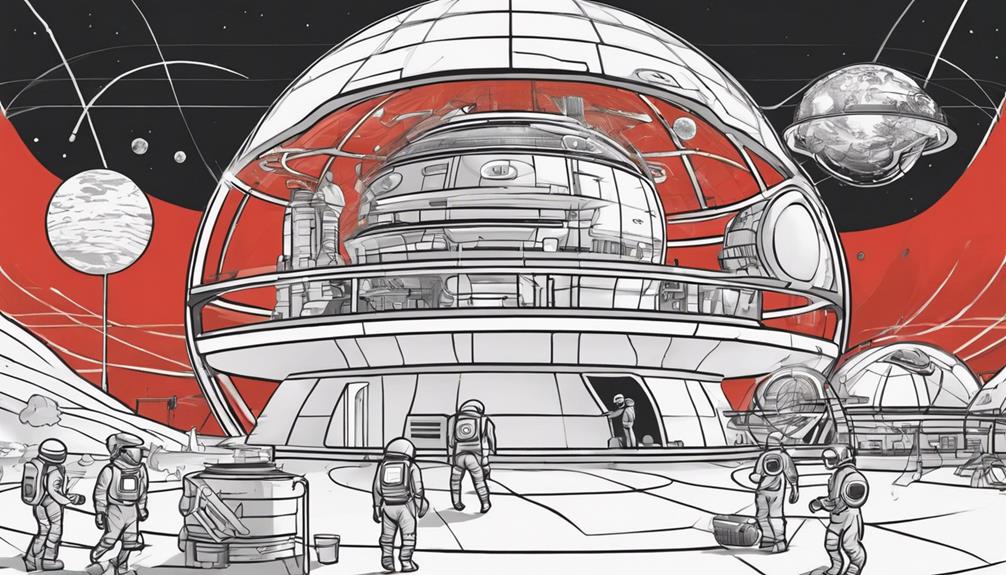
Living on other planets presents several challenges that must be carefully addressed. Gravity and atmosphere variations can impact human health and daily activities, while radiation exposure risks pose significant threats to long-term habitation. Additionally, ensuring a sustainable food and water supply is crucial for the survival of any future interplanetary settlers.
Gravity and Atmosphere
Challenges posed by the unique gravitational forces and atmospheric compositions of various planets present significant hurdles to potential human habitation beyond Earth's confines. Mars, with its lower gravity and thin CO2 atmosphere, appears more favorable for human visits compared to planets like Jupiter and Venus. The colder conditions on Mars, however, necessitate innovative solutions such as underground living and artificial environments for sustained habitation. Mars, despite its challenges, offers trace amounts of oxygen and water vapor, making it a potential candidate for human exploration. The table below provides a brief comparison of the gravity and atmosphere of Mars with Earth for better understanding:
| Planet Parameter | Mars | Earth |
|---|---|---|
| Gravity | 0.38 g | 1 g |
| Atmosphere | Thin CO2 | Nitrogen-Oxygen |
Radiation Exposure Risks
Radiation hazards on extraterrestrial bodies pose formidable obstacles to sustained human presence beyond Earth. The lack of protective atmospheres, like Earth's, leaves inhabitants vulnerable to increased radiation exposure. Astronauts on Mars, for instance, would confront elevated levels of radiation from cosmic rays and solar flares compared to those experienced on Earth. Prolonged exposure to such radiation can heighten the risk of cancer and other health complications for space travelers. To address these challenges, shielding technology and the development of underground habitats are being considered as potential solutions to mitigate radiation exposure risks on other planets. Given the limited protection offered by thin atmospheres, innovative approaches are essential to ensure the safety and well-being of humans in extraterrestrial environments.
Food and Water Supply
Extraterrestrial habitation necessitates meticulous planning and innovative solutions to address the fundamental requirements of sustenance and resource management, particularly concerning food and water supply. Sustainable colonization of other planets relies on efficient food production methods such as hydroponic systems and algae cultivation. These technologies can help overcome the challenges posed by limited resources and the need for self-sufficiency. Additionally, water recycling and extraction from the environment are crucial for maintaining life support systems. Future advancements like 3D printing of food may provide further opportunities for long-term colonization efforts. Developing robust food and water supply mechanisms is essential for the success of human settlements on other planets, requiring a comprehensive approach to ensure the sustainability of extraterrestrial habitats.
Artificial Habitats and Life Support Systems
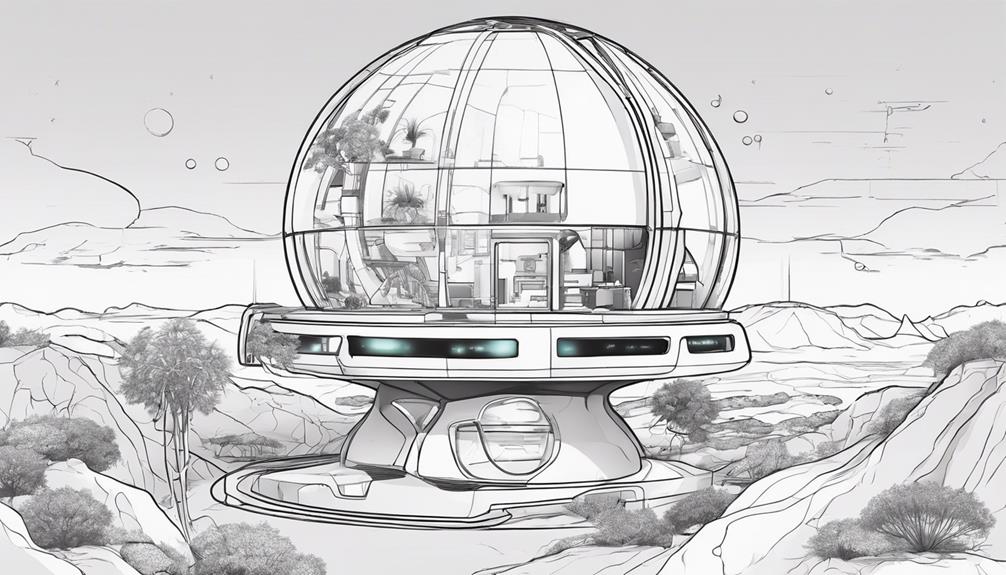
Artificial habitats and life support systems are crucial components for sustaining human life in extraterrestrial environments such as Mars. These systems play a fundamental role in providing essential resources like oxygen and water while managing waste effectively. Innovations in sustainable oxygen production and waste recycling systems are key areas of focus for ensuring the long-term viability of artificial habitats on other planets.
Sustainable Oxygen Production
Sustainable oxygen production is a critical component for ensuring human survival in artificial habitats on other planets. In space missions, electrolysis plays a vital role in extracting oxygen from water by breaking it down into hydrogen and oxygen. This process provides astronauts with breathable air essential for their survival. Moreover, recycling carbon dioxide and utilizing plants for oxygen generation are also crucial methods in sustaining life support systems in space habitats. Efficient oxygen production mechanisms are paramount for the long-term habitation of humans on other planets, highlighting the significance of developing reliable and innovative technologies to support human life beyond Earth.
Waste Recycling Systems
Ensuring the long-term viability of human habitation on other planets necessitates the development and implementation of advanced waste recycling systems within artificial habitats and life support systems. Waste recycling systems in space habitats play a crucial role in minimizing resource waste, maintaining a closed-loop environment, and sustaining life support systems for extended space missions. These systems recycle waste materials such as water, air, and organic matter, contributing to self-sufficiency and reducing the dependence on constant external supplies. Advanced technologies and processes are continuously being developed to optimize waste recycling in artificial habitats, ensuring efficient utilization of resources and enhancing the sustainability of human presence on other planets.
| Waste Recycling Systems in Space Habitats | ||
|---|---|---|
| Minimize resource waste | Maintain a closed-loop environment | Sustain life support systems |
| Recycle water, air, and organic matter | Contribute to self-sufficiency | Reduce dependence on external supplies |
| Develop advanced technologies | Optimize waste recycling processes | Enhance sustainability on other planets |
Terraforming Other Planets
Terraforming other planets involves the ambitious endeavor of transforming celestial bodies like Mars or Venus to replicate Earth-like conditions for potential human habitation. Mars, in particular, has garnered significant attention due to its similarities to Earth and the potential for sustaining life. However, creating habitable conditions on Mars poses numerous challenges. The planet's thin atmosphere and lack of liquid water are significant obstacles that must be overcome for successful terraforming to occur.
One proposed method for terraforming Mars is to release greenhouse gases into the atmosphere to thicken it, trapping heat and creating a greenhouse effect. This process could potentially raise the planet's temperature and allow liquid water to exist on the surface, a crucial aspect for supporting life. Despite these theoretical approaches, the practical realization of terraforming Mars remains a complex and distant goal. The extensive timeframes and technological requirements involved in transforming Mars into a habitable planet highlight the immense challenges associated with this ambitious undertaking. As such, while terraforming offers a glimpse into the future of planetary colonization, it currently remains a concept fraught with uncertainties and obstacles.
Sustainability and Resources on Mars
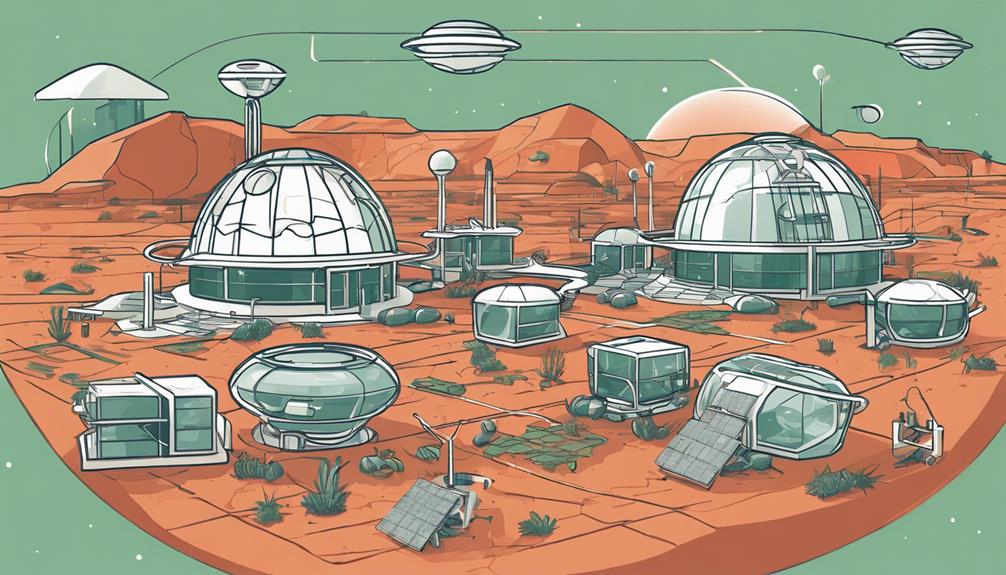
Exploring the potential for utilizing resources and fostering long-term viability on Mars presents a complex challenge requiring innovative solutions and strategic planning. Mars, with its trace amounts of oxygen and water vapor, offers potential resources for sustaining life. However, the planet's harsh surface conditions necessitate underground living and artificial environments for human exploration. The lower gravity and thin CO2 atmosphere on Mars pose challenges for habitation but also present unique opportunities for research and resource utilization.
| Challenges | Opportunities |
|---|---|
| Harsh surface conditions | Potential for resource utilization |
| Costly resupply missions | Research opportunities |
| Colder conditions compared to Earth | Innovation in energy, food, and shelter |
Establishing a manned outpost on Mars is costly due to the distance for resupply missions, impacting sustainability. Innovative solutions for energy, food, and shelter are essential to support human presence on Mars in the long term. As we consider the sustainability and resource utilization on Mars, strategic planning and continuous innovation will be key to overcoming the challenges and seizing the opportunities that the red planet presents.
Interplanetary Travel and Settlement
Interplanetary travel and settlement pose significant challenges and opportunities for the future of human exploration beyond Earth's bounds. NASA's missions have shown that interplanetary travel, particularly to Mars, is feasible but not without obstacles. The journey to Mars can take several months, requiring meticulous planning for crew sustenance. Mars, with its lower gravity and thin atmosphere, offers potential for human visits. However, challenges such as establishing a manned outpost on the red planet are considerable due to the distance for resupply missions. Living on Mars may necessitate innovative solutions like underground habitats and artificial environments to shield inhabitants from its harsh conditions.
In contrast, planets like Jupiter and Venus present even greater challenges for settlement due to their lack of solid surfaces and extreme environments. Despite this, the prospect of interplanetary travel and potentially establishing human colonies on Mars remains a focal point for future exploration efforts. Technologies and strategies developed through these endeavors could pave the way for sustained human presence beyond Earth.
Ethical Considerations of Planetary Colonization
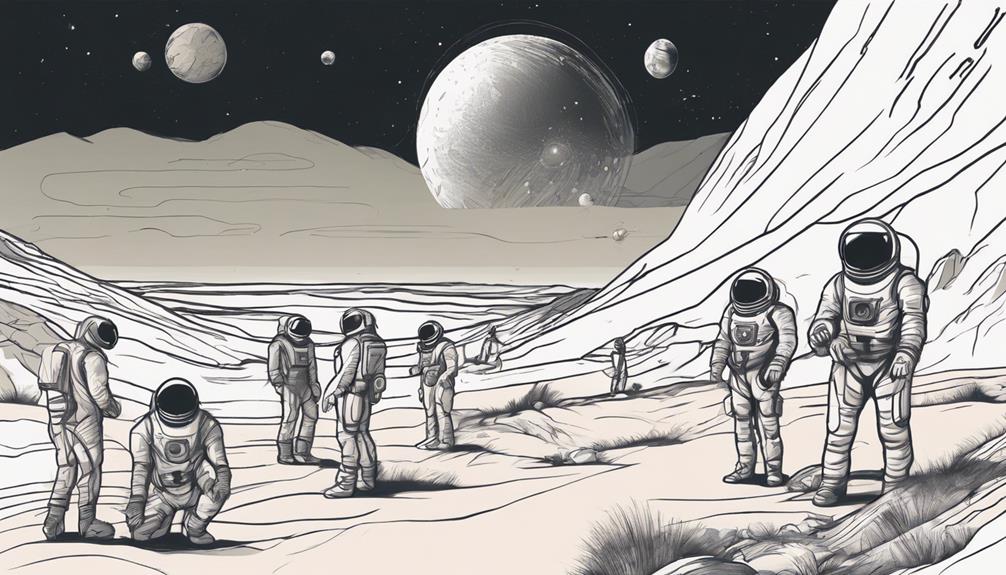
In the discourse surrounding planetary colonization, ethical considerations play a fundamental role in addressing the preservation of potential existing life forms and ecosystems. When contemplating the colonization of potentially habitable planets, such as those NASA is searching for signs of life, several ethical considerations must be taken into account:
- Respect for Existing Life Forms: Prioritizing the preservation of any indigenous life forms that may exist on the new planet is essential. Ethical frameworks need to be established to guide interactions with these potential life forms to avoid harm or extinction.
- Preservation of Ecosystems: It is crucial to consider the impact of human activities on the new planetary environments and ecosystems. Colonizers must assess and minimize any detrimental effects to ensure the long-term sustainability of these ecosystems.
- Equitable Access and Resource Distribution: Ensuring fair and equitable access to resources and opportunities for all individuals involved in planetary colonization is a significant ethical concern. Fair distribution of resources and opportunities can help prevent exploitation and promote harmonious coexistence on the new planet.
Frequently Asked Questions
What Other Planet Can Humans Live On?
For humans to establish a sustainable presence beyond Earth, Mars stands as the most viable candidate for colonization due to its relative proximity and potential for terraforming. Challenges like harsh conditions on Venus and Jupiter render them unsuitable for human habitation. Exoplanet exploration offers insight into potentially habitable worlds, but the technological and logistical obstacles are substantial. Mars colonization efforts require innovative solutions for long-term survival, focusing on underground living and artificial environments.
Is It Possible for Life to Exist on Other Planets?
Exploring the possibility of life on other planets requires a comprehensive examination of habitable conditions and the potential for alien existence. Scientists analyze various factors such as atmospheric composition, temperature ranges, and presence of water to assess the likelihood of life. Understanding the intricate relationships between these elements is crucial in determining if other planets could support life forms beyond Earth. This exploration delves into the fundamental mystery of existence beyond our known boundaries.
How Long Can We Survive on Other Planets?
Survival challenges on other planets are significant due to extreme environmental factors such as temperature variations, lack of breathable atmosphere, and radiation exposure. Human adaptation to these conditions would require advanced technology for life support systems and protective gear. Factors influencing survival duration include access to essential resources like water, food, and oxygen. Sustaining life on other planets necessitates comprehensive planning and innovative solutions to overcome these formidable challenges.
Can There Be Life in Another Galaxy?
Exploring the potential for life in another galaxy involves complex considerations. Factors such as the existence of alien civilizations, advancements in space exploration technologies, and the search for extraterrestrial organisms drive scientific inquiries. Studying the chemical makeup and atmospheres of exoplanets in distant galaxies offers insights into the possibility of life beyond our own. This pursuit challenges our understanding of life's boundaries and the vast possibilities within the cosmos.
Conclusion
In conclusion, the potential for human colonization on other planets such as Mars and Venus presents numerous challenges that must be addressed through technological advancements and global cooperation. The feasibility of establishing sustainable habitats and addressing resource requirements will be critical in the pursuit of interplanetary settlement. Ethical considerations surrounding planetary colonization must also be carefully evaluated as we continue to explore the possibility of living beyond Earth.
